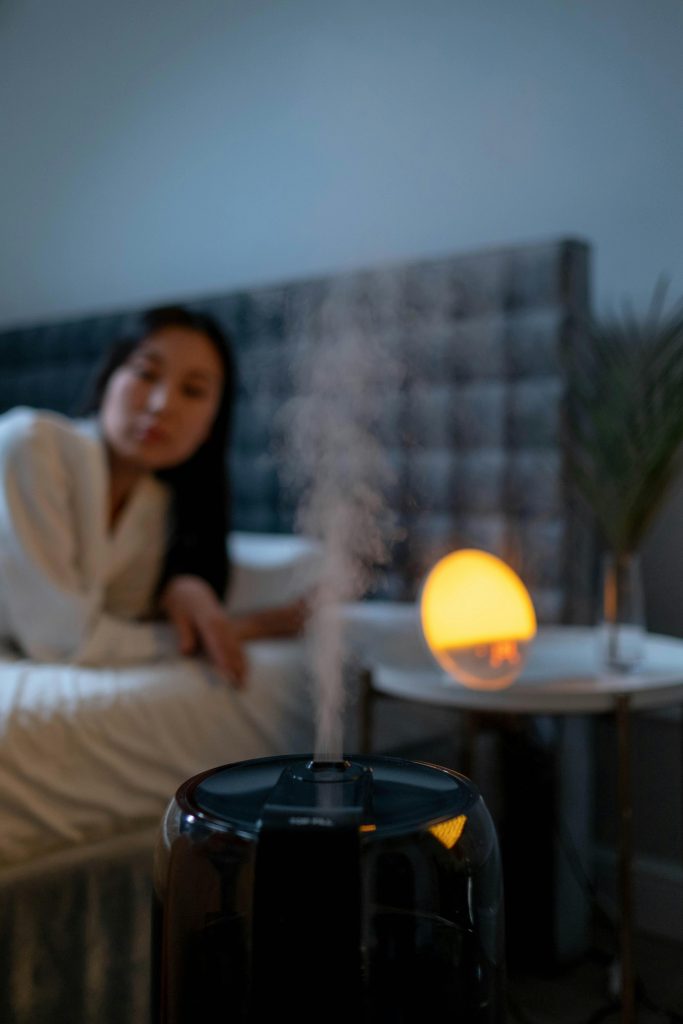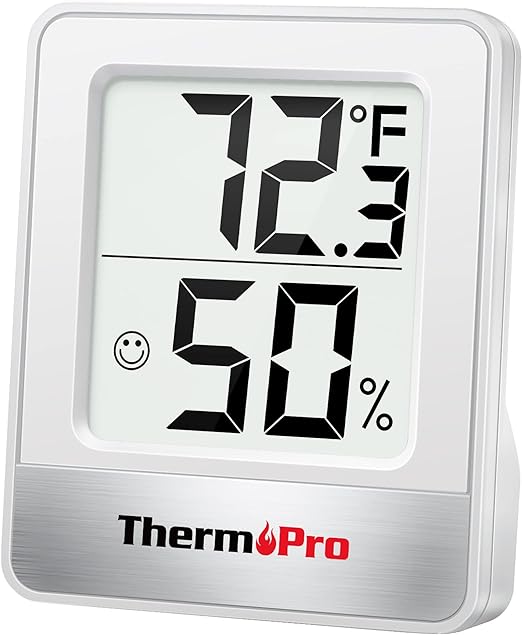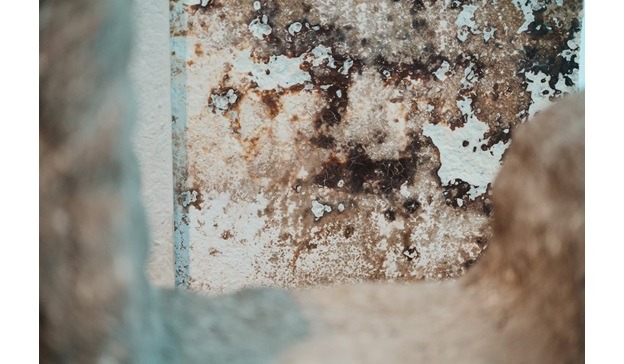Have you ever walked into a room and instantly felt sticky, uncomfortable, or like the air was too heavy to breathe? That’s high humidity at work. It’s easy to overlook, but when the humidity levels in your home creep too high, it can affect much more than just your comfort. From causing mold growth and structural damage to affecting your health (and even your pets), excess moisture is no small problem.
I’ve experienced the frustration of peeling wallpaper and musty smells myself, and trust me—it’s not fun! In this article, we’ll dive into what happens when humidity is too high, how to recognize the signs, and simple ways to get things back under control. Let’s get started!

What Happens When Humidity is Too High?
When indoor humidity levels start creeping up, you’ll notice things feeling more uncomfortable, but the effects go beyond just sweating more. High humidity can have serious consequences for your home and health.
Physical Discomfort and Health Issues
First off, let’s talk about the physical toll. When the air is heavy with moisture, it becomes harder for your body to cool down naturally. This was something I learned the hard way during a particularly hot, sticky summer. I felt constantly sweaty, even indoors, and the air felt thick and stifling.
High humidity can also worsen respiratory conditions like asthma or allergies.
According to Dr. Jane Williams, a respiratory specialist, “Humidity above 60% can make it more difficult to breathe, especially for those with respiratory issues.”
This is because moisture in the air can trap pollutants and allergens, making them more likely to irritate your lungs.
Damage to Your Home
Your home isn’t immune to high humidity either. When moisture levels stay elevated for too long, it can start to damage wood, paint, and even your home’s foundation. I noticed this firsthand in my bathroom where the paint started peeling, and it was because of the constantly high humidity levels.
Mold and mildew love these conditions, too. If you’ve ever seen black spots growing in damp corners or around windows, you’ve witnessed the results of too much humidity.
According to mold remediation expert John Davis, “Mold grows rapidly when humidity levels exceed 60%, which can lead to both structural damage and health issues.”
Signs Humidity is Too High in Your House
So, how do you know if the humidity in your home is too high? Fortunately, there are several clear signs to look out for.
Condensation on Windows and Walls
One of the first signs I noticed in my home was condensation on the windows. It felt like no matter how often I wiped them, they were always foggy. This happens because the moist air inside the house cools down when it hits the cold window panes, causing condensation to form.
Musty Odors
A damp, musty smell is another dead giveaway. When humidity levels are too high, mold and mildew start to grow, and that’s when you get that unpleasant smell. It’s often most noticeable in basements, bathrooms, or any other poorly ventilated areas of your home.
Peeling Paint or Wallpaper
I learned this lesson the hard way when I saw my wallpaper bubbling and peeling in the corners. Excess moisture seeps into walls, causing paint and wallpaper to lose their adhesion, which can lead to costly repairs.
What Humidity Level is Too High for Pets?
We often think of humidity as a human comfort issue, but it affects our pets too. In fact, your furry friends can suffer just as much as you from excessively humid air.
Health Risks for Pets in High Humidity
Pets, especially dogs and cats, can have trouble regulating their body temperature in high humidity. My dog, Max, started panting more frequently during a particularly humid week. He seemed sluggish and uncomfortable, which prompted me to check the indoor humidity levels. Just like humans, pets can experience heat stress, skin infections, and respiratory issues when exposed to high humidity for too long.
Veterinarian Dr. Lisa Brown explains, “High humidity can cause pets, particularly those with thick coats, to overheat more easily, leading to health risks such as heat stroke.”
Ideal Humidity Levels for Different Pets
While certain pets, like reptiles, may thrive in higher humidity, for most dogs and cats, anything above 70% is dangerous. Keeping your home’s humidity in the 30-50% range is ideal for both human and pet health.
Is 70% Humidity Very High?
You might wonder, is 70% humidity very high? The answer is yes. When humidity hits 70%, you’ll likely start to notice the discomfort almost immediately. Air becomes saturated with moisture, and your body’s natural cooling process, sweating, is less effective.
At this level, mold growth accelerates, wood warps, and pests like dust mites thrive. For both your home and your health, 70% humidity is too high. Ideally, you want to keep indoor humidity levels between 30-50%, with anything above 60% becoming problematic.
The Science Behind High Humidity Levels
Let’s dive a bit into the science to understand why high humidity is so uncomfortable and potentially dangerous.
How Humidity Affects Air Quality
When the air is humid, it feels heavier because moisture is filling up space that dry air would typically occupy. This makes it harder to breathe and for your body to cool off. Additionally, high humidity allows dust, mold spores, and bacteria to hang in the air longer, which increases your exposure to allergens and irritants.
Humidity’s Role in the Spread of Allergens and Bacteria
Humidity levels above 60% create the perfect environment for mold, dust mites, and bacteria to thrive. For anyone with allergies, this can turn your home into a trigger zone. Keeping indoor air dry helps reduce the spread of these allergens.
how to manage high humidity In Home
Thankfully, controlling high humidity is not an impossible task. There are plenty of solutions to help manage indoor moisture.
Using Dehumidifiers
A dehumidifier is your best friend when battling high humidity. After realizing the humidity in my basement was too high, I invested in a NineSky Dehumidifier. It’s a small unit, but it works wonders in keeping my living space comfortable and moisture-free.
Improving Ventilation
Good ventilation is crucial in maintaining ideal humidity levels. Bathrooms and kitchens, especially, need proper exhaust systems to prevent moisture buildup. I installed a ventilation fan in my bathroom, which has made a huge difference in keeping the air dry.
Regular Maintenance and Inspections
Regularly inspecting your home for leaks, cracks, and areas where moisture could seep in is another way to combat high humidity. I’ve made it a habit to check windows and doors for proper sealing, as any gaps can let in humid air from outside.
How to Measure and Control Indoor Humidity Levels
Now that we’ve established the importance of controlling humidity, how do you measure it effectively?
Using a Hygrometer
A hygrometer is a simple device that measures the humidity in your home. I keep one in my living room to make sure the levels stay within the 30-50% range. It’s affordable and gives me peace of mind that my space is not too damp or dry.
Humidity Control Devices and Smart Technology
These days, smart thermostats and air purifiers can help regulate indoor humidity automatically. Some even come with built-in hygrometers, so you can monitor your home’s conditions from your phone.
Mike Jensen, an indoor air quality expert, suggests “keeping humidity between 40-50% for optimal health and comfort.”
Take Control of Your Indoor Humidity
High humidity can feel overwhelming, but by recognizing the signs and taking the proper steps to manage it, you can create a healthier, more comfortable living environment. Whether it’s investing in a dehumidifier, improving ventilation, or just keeping an eye on your hygrometer, it’s important to maintain ideal moisture levels for both your home and your family.
FAQ: Understanding High Humidity and Its Effects
1. What happens if the humidity in my home is too high?
When humidity levels are too high, your home becomes a breeding ground for mold, mildew, and bacteria. Excessive moisture can also lead to peeling paint, warped wood, and respiratory problems like asthma and allergies. Additionally, high humidity makes it harder for your body to cool down, leading to discomfort and potential heat stress.
2. What is considered high humidity inside a house?
Indoor humidity levels above 60% are considered too high. Ideally, you want to keep indoor humidity between 30-50% to maintain comfort and prevent mold growth or other issues related to moisture.
3. What are the signs that my house has high humidity?
Some common signs include condensation on windows, musty odors, visible mold or mildew, and peeling paint or wallpaper. You might also notice a persistent damp feeling in the air and increased respiratory discomfort.
4. Can high humidity affect my pets?
Yes, pets are also affected by high humidity. Just like humans, they can experience discomfort, difficulty regulating body temperature, and even heat stress. For most pets, anything above 70% humidity is dangerous and can exacerbate respiratory issues or cause skin infections.
5. Is 70% humidity too high for my home?
Yes, 70% humidity is considered very high. At this level, mold growth accelerates, wood and other materials can warp, and the air becomes uncomfortably heavy, making it harder for both humans and pets to stay cool.

